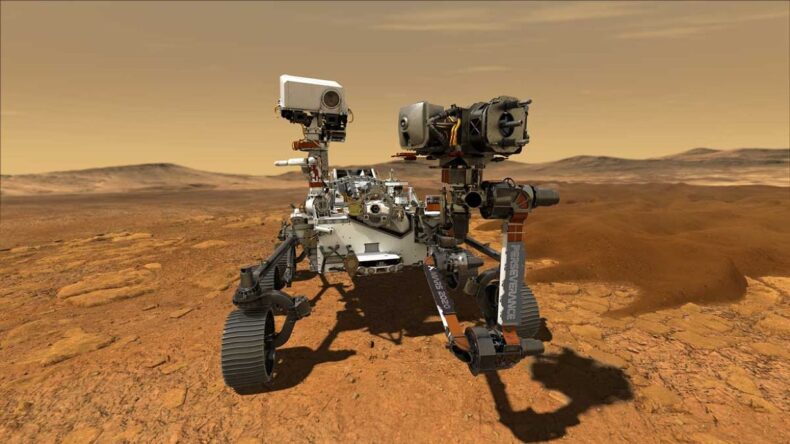Table of Contents
A test flight of the Mars spacecraft is planned for late 2024, and work on the Marsoplane started in April 2022.

As part of the agreement India and Russia struck in 2021 to expand their collaboration in space, this new Mars mission is being designed jointly by IIT Kharagpur and the Space Research Institute of the Russian Academy of Sciences. Prime Minister Narendra Modi and Russian President Vladimir Putin signed the agreement on December 6 of that year in order to improve collaboration between ISRO and Roscosmos.
Challenges:
It is noted that the project’s primary challenges lie in the peculiarities of the Martian environment and atmosphere, and that the UAV must be equipped to handle the Red Planet’s rarefied atmosphere and dust storms.
Being incredibly thin, less than 1% of the volume of Earth’s atmosphere, Mars’ atmosphere would provide significant challenges.

This mission has difficulties in making the UAV lightweight, tough enough to resist Martian dust storms, and small enough to fit inside the rocket’s fairing. That would be incredibly difficult because Mars’ atmosphere is very thin, less than 1% the volume of Earth’s atmosphere, and primarily made of carbon dioxide.
After the incredible success of NASA’s Ingenuity helicopter, flying an aircraft on Mars is currently seen to be highly conceivable. Ingenuity, which was intended to fly just five times to demonstrate that powered flight is feasible in the tenuous Mars atmosphere, ended up setting a record by flying 45 times. Although it weighs little under two kilograms and has been in use for two years, the tiny helicopter also meets the requirements for being both lightweight and robust.
Mars Mission
India’s space programme, established in 1969, is in its infancy by international standards and has never carried a person into space.
A Russian consul, Sergey Kotov, however, informed students in Chennai, that Russia and India may collaborate in the next space missions.
Kotov reminded the students that even though space history is not as long as human history, it is still a significant advancement. “And this advancement has been made by both the Soviet Union and Russia. Such actions would be taken in the future in collaboration with India.”
Yet like the United States, Russia or India’s Mars mission is probably decades away.
The plan for a manned expedition to Mars was announced by NASA in October, but the administrator of the agency has recognised that any mission is unlikely to take place until the 2030s at the earliest.
The European Space Agency (ESA) and the US space agency NASA both have missions planned that are intended to debut in 2029 and the first years of the 2030s. Strangely, US-based private launch service provider Rocket Lab also launched its own Venus mission in August 2022, with a target launch date of mid-2030 but with a potential for delay.

Yelena Karpovich, an MAl junior researcher, is in charge of the project’s UAV design and aerodynamics. In order to explore the Martian atmosphere and surface, a group of researchers from the Moscow Aviation Institute (MAI) are working with experts from India to construct a fixed-wing robotic aerial vehicle.
According to Karpovich, the technology demonstrator would be put to the test by the end of 2024.An international team of engineers, including experts in computational fluid dynamics from the Indian Institute of Technology Kharagpur, is creating the Martian robotic flying craft.
According to her, the initiative aims to create the idea of a fixed-wing aerial platform that may compete with the current Mars research probes for a specific market niche.
After receiving approval from the Russian Science Foundation for funding, construction on the Marsoplane started in April 2022. By the end of the next year, the research group’s technology demonstration should be tested satisfactorily.
The Russian side must create and successfully test the technology demonstration by the end of 2024, she stated, in addition to publishing ten articles.
The UAV must be prepared to handle the Red Planet’s rarefied atmosphere and dust storms, she noted, and these are the project’s main challenges.
“The peculiarities of the Martian environment hamper the designing of the efficient lifting surfaces and constrain us in selecting the power plant. Dust storms necessitate careful planning protection for the systems, equipment, and flight profile of the flying craft with a minimal wing load” she said.
The researcher also said that it was important to figure out how to get the UAV into the carrier rocket’s nose cone. UAVs must either be extremely small or have a foldable or soft structure design.













